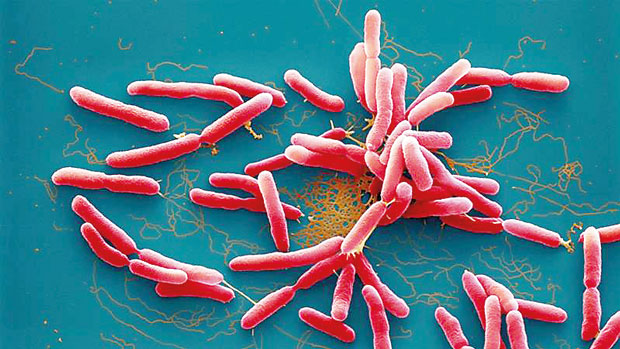Reply To:
Name - Reply Comment

QWhat is melioidosis?
Melioidosis is a tropical infection, transmitted from soil and water to humans. It is seen only in warm, tropical countries. The causative pathogen, Burkholderia pseudomallei, is a bacterium found naturally in soil and water. The bacterium enters the body through soil or water contamination of abraded skin.
QWho is at risk of being exposed to this infection?
The infection is transmitted through exposure to soil, mud or water. Therefore, melioidosis is more common in people who have regular and frequent exposure to soil and water, such as paddy farmers, agricultural workers, home gardeners and construction workers. Since most rural Sri Lankans walk barefoot in their home compounds, paddy fields and roads, they may get exposed to this bacterium. During flooding, the whole community becomes exposed to large amounts of mud and water and the risk of contracting this infection increases.
QWho is more likely to get melioidosis?
Although many people get exposed to this bacterium, infection is more common in people with underlying medical problems, especially diabetes. However, in disaster conditions like flooding where there is a high exposure to contaminated water, even healthy people may get infected.
Q What are the symptoms?
There are no unique symptoms in melioidosis. Patients with melioidosis usually have fever. They may have lung infection with cough or skin abscesses. Some have infection in the liver, spleen, salivary glands, lymph nodes, bone or joints. Melioidosis can even infect the brain. Infection may develop very suddenly and acutely or develop insidiously and slowly over a few weeks. Melioidosis may be mistaken for other fevers, such as dengue or leptospirosis.
QCan it cause an epidemic?
Melioidosis occurs throughout the year in Sri Lanka but increases during the southwest and northeast monsoons. There is a rapid increase in cases of melioidosis during rainy weather, storms and flooding and other natural disasters.
QWhat is the death rate in melioidosis?
Melioidosis is a severe, potentially fatal infection and the death rate can be as high as 25-50%. However, early diagnosis and appropriate antibiotic treatment can save the patient.
QIs melioidosis common in Sri Lanka?
Melioidosis is increasingly recognized in Sri Lanka. According to our records, we have between 250–500 cases diagnosed in the last 10 years. Most of them were diagnosed within the last 3 years due to increased awareness among doctors. However, it is regrettable that there are many doctors in Sri Lanka who are not knowledgeable on this disease.
QWhere is this infection found in Sri Lanka and does it affect adults or children?
Meloidosis is found all over the island. Most cases are seen in rural, rice growing areas. It is less common in the cool hill country. Infection occurs in all age groups, including children and in both sexes, though the highest incidence is seen in middle-aged males.
QIs there any treatment?
There are well-established antibiotic treatment guidelines for the treatment of melioidosis.
QAny take home message?
Melioidosis is an endemic disease in Sri Lanka. It is widely distributed throughout the island and affects all age groups. It should be included in the diagnosis of fevers in Sri Lanka.